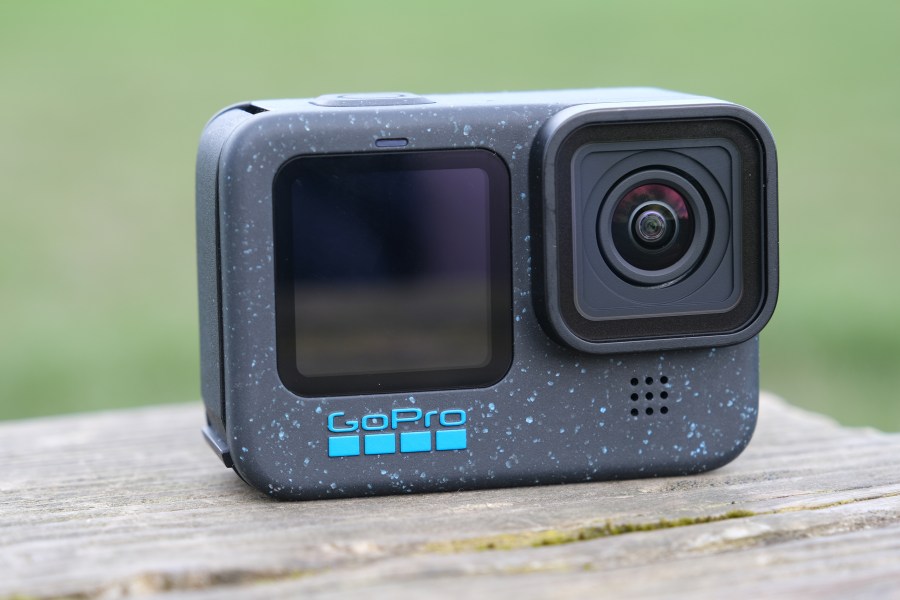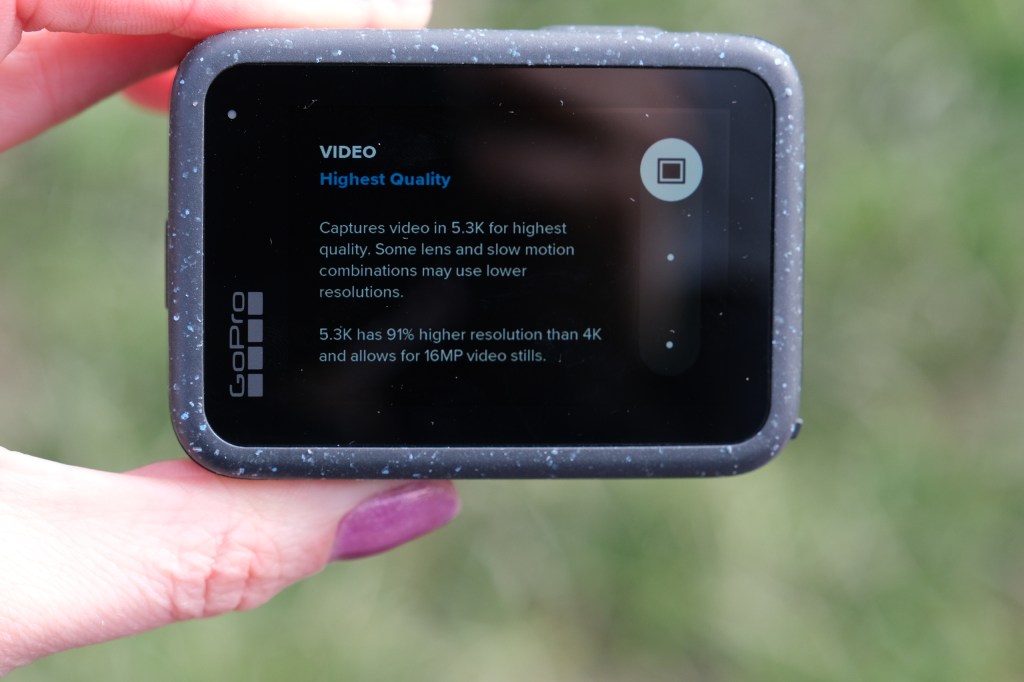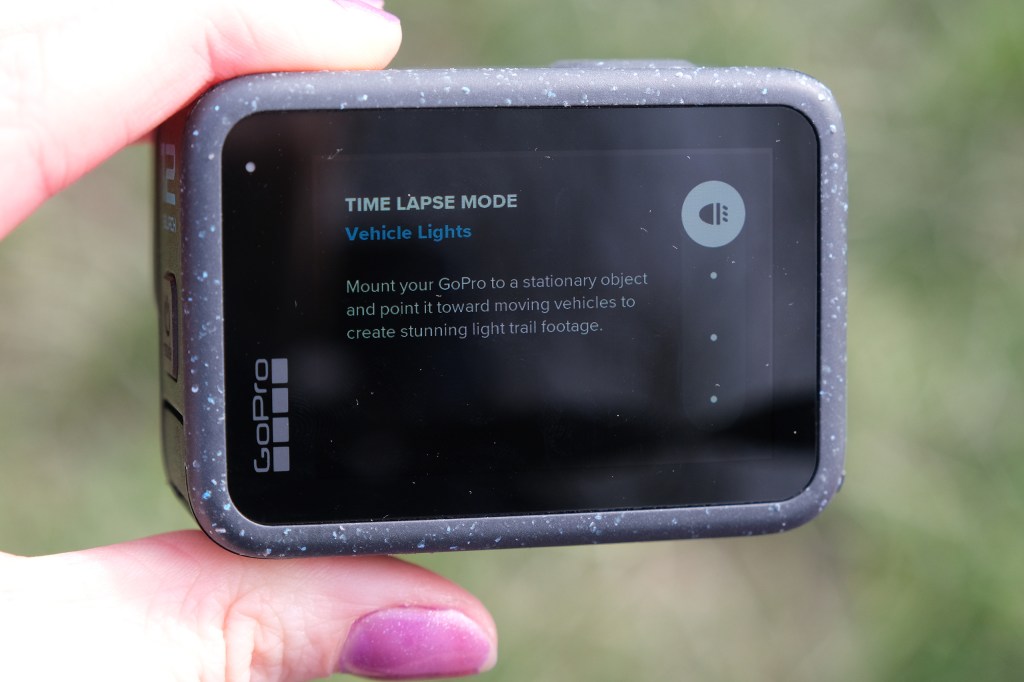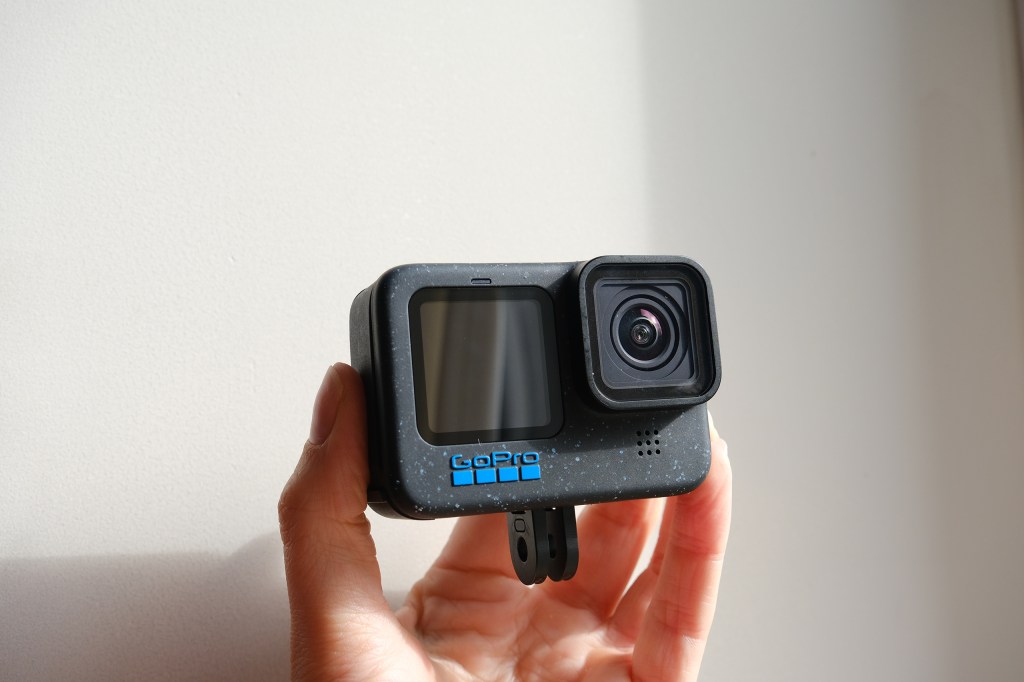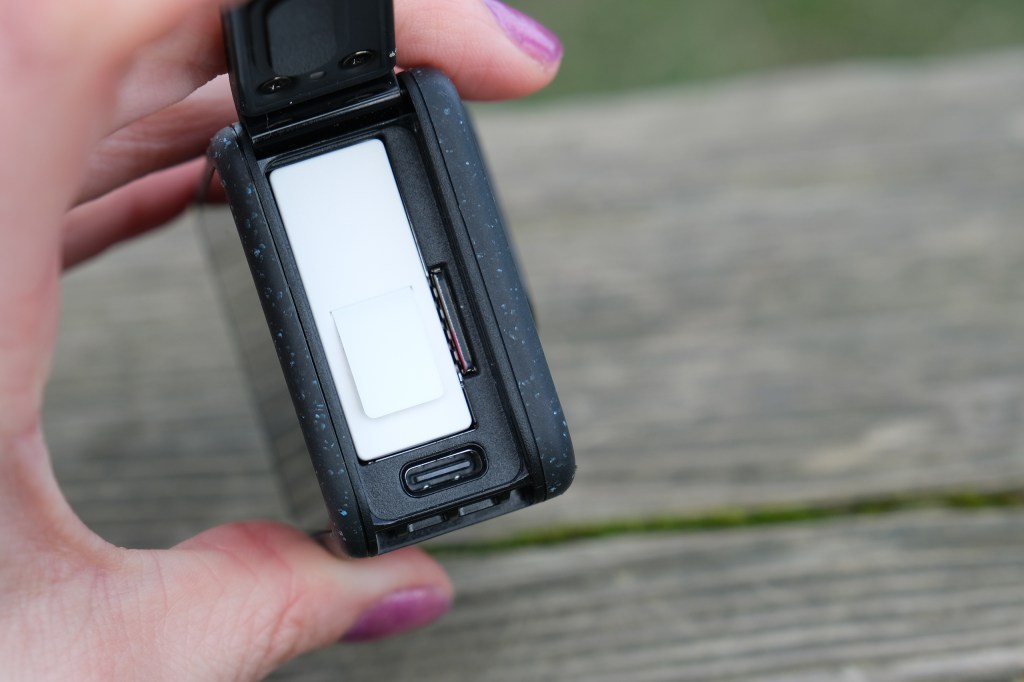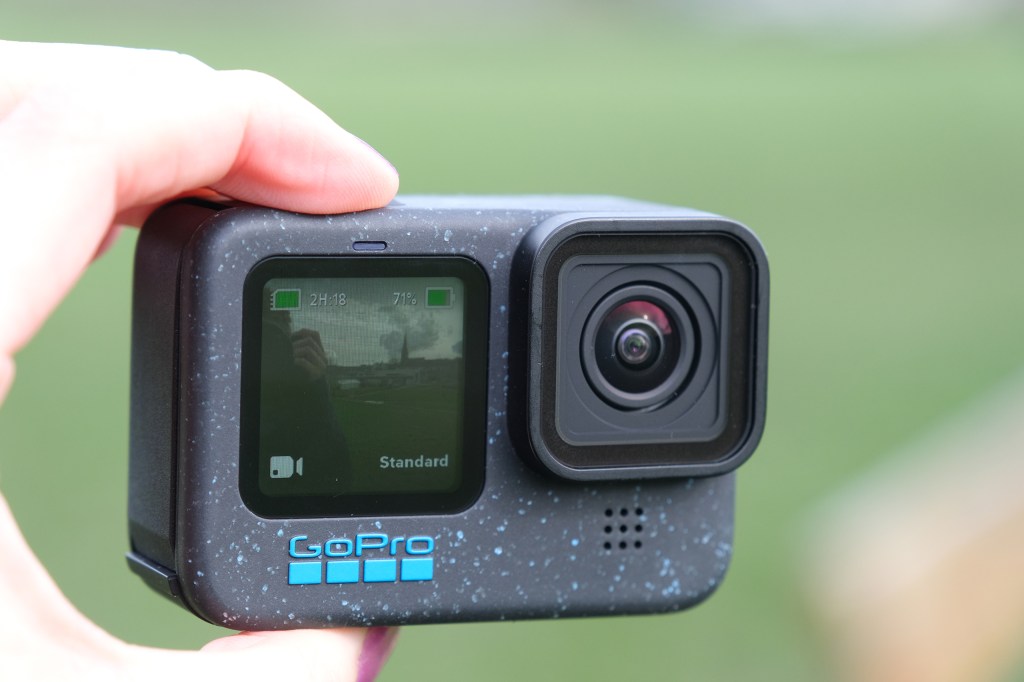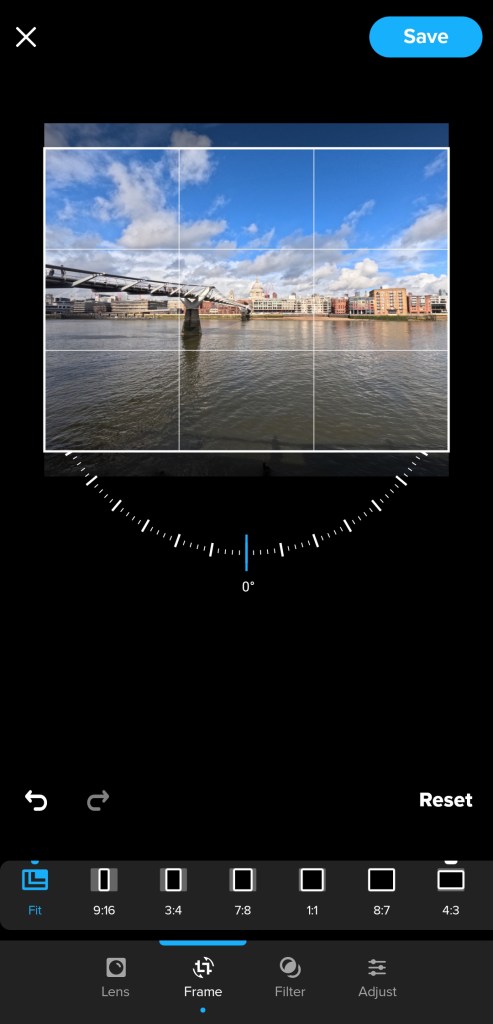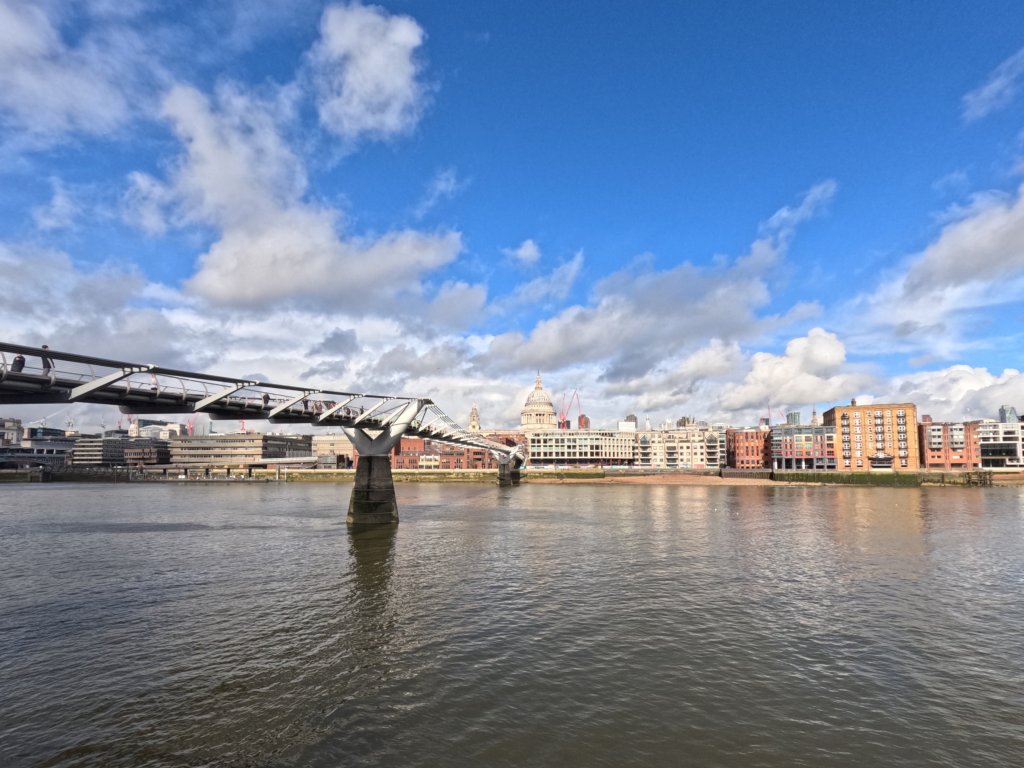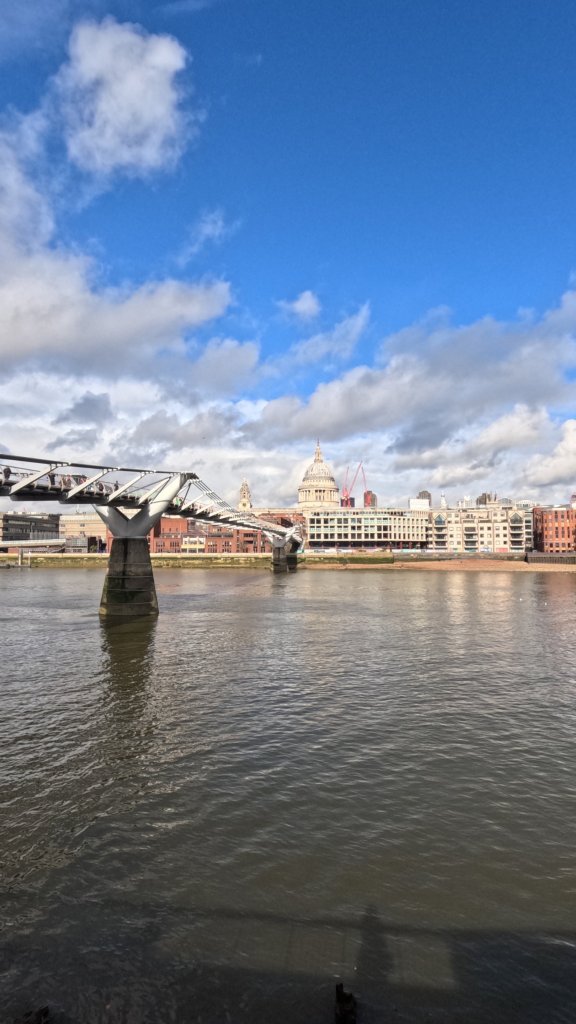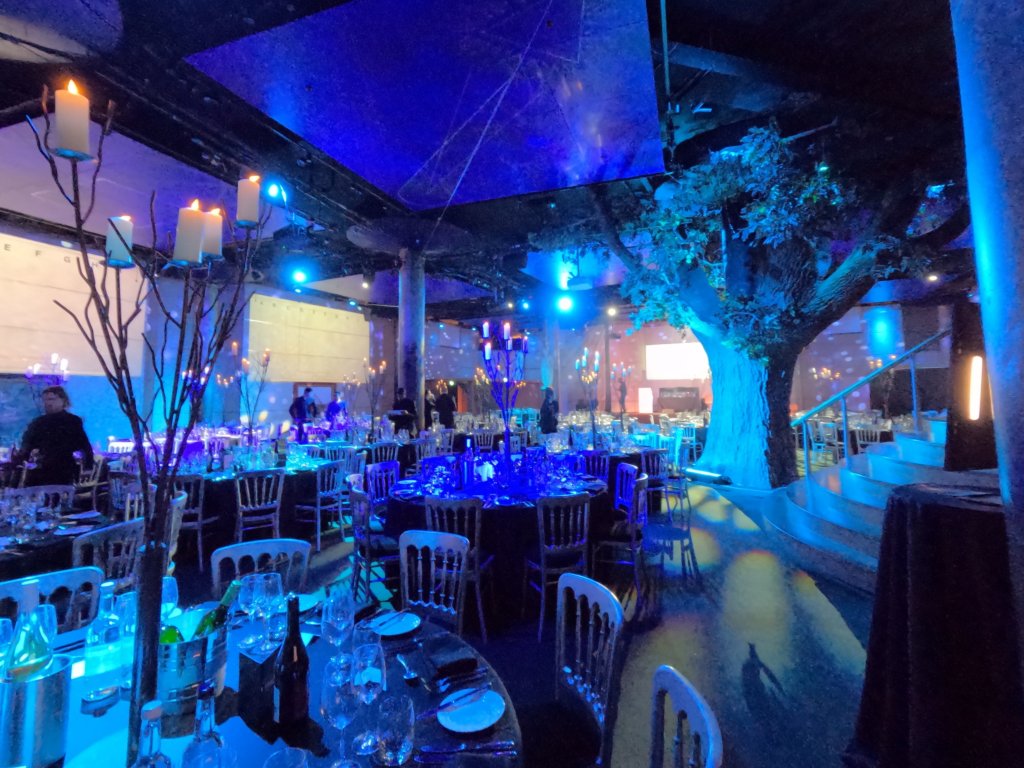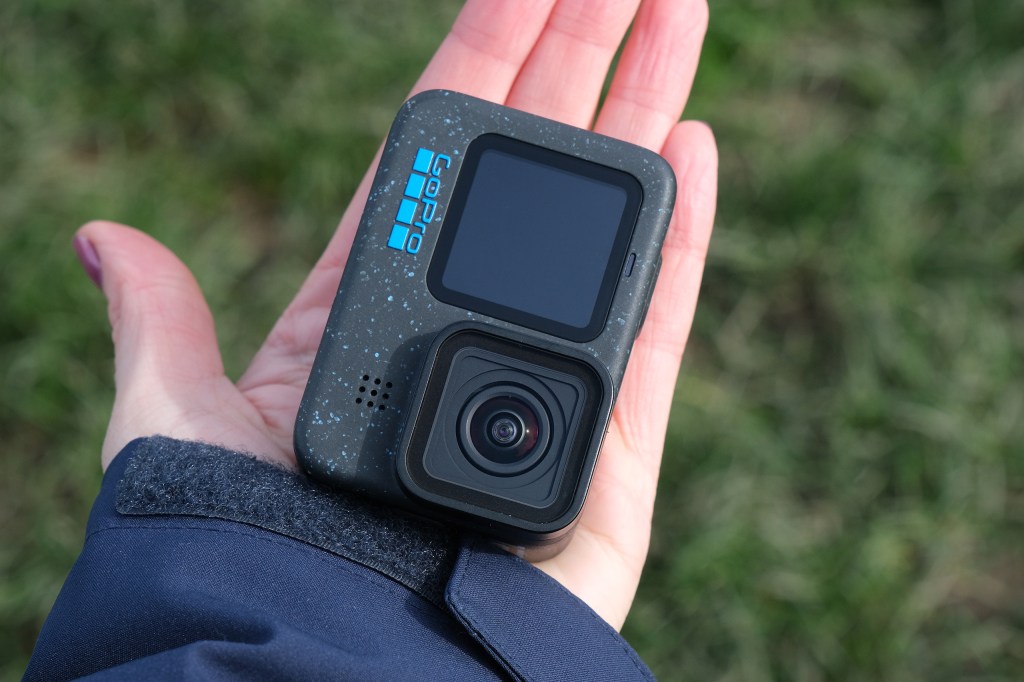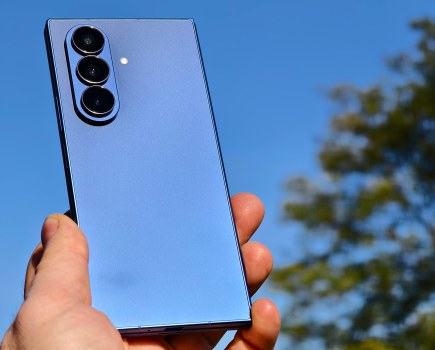Amateur Photographer verdict
The GoPro HERO12 Black creates some well-lit, great looking footage with plenty of features and stabilisation.- Well priced
- Portrait video recording for social media
- Lots of shooting modes and features available
- Hardy design and build
- Overheats with a lot of use
- Very minor upgrade on HERO11
- Poor low-light performance
- Mediocre battery when shooting continuously
Now two years old, the GoPro HERO12 Black remains a great action camera. Noted as the market leader in robust cameras that are ready for anything, the HERO12 Black retained core GoPro characteristics whilst offering some additional features to the HERO11 that will be welcomed by serious creators and action fans. The HERO12 looks pretty much the same in design as previous editions, with the addition of a speckled design on the body. It is one of the cheaper vlogging and action cameras around.
There is also the GoPro HERO12 Black Creator Edition Bundle ($549 / £479) with its industry leading 177° field-of-view Max Lens Mod 2.0. The Max Lens Mod 2.0 can also be purchased separately for $96 / £100 (new).
Note that, at present, the HERO12 Black is $60 and £50 cheaper than last year’s GoPro HERO13 Black ($360 / £329) with both available at discounted prices. The previous HERO11 Black can be bought for $300 / £275; the same as this 12.
At a glance
- High Dynamic Range (HDR) Photo and Video
- 1.5 hours at 5.3K30 and over 2.5 hours at 1080p30
- Bluetooth audio support for AirPods + other Bluetooth audio devices for wireless sound recording and voice control
- 5.3K60, 4K120 and 2.7K240 video resolutions
- HyperSmooth 6.0 video stabilization with 360° Horizon Lock
- 27MP photos with 24.7MP stills from video
- Waterproof to 33ft
- GP-Log and LUT support
- Optional Max Lens Mod 2.0 lens accessory available enabling ultra-wide angle, 177-degree field of view in 4K60
- $300 / £279
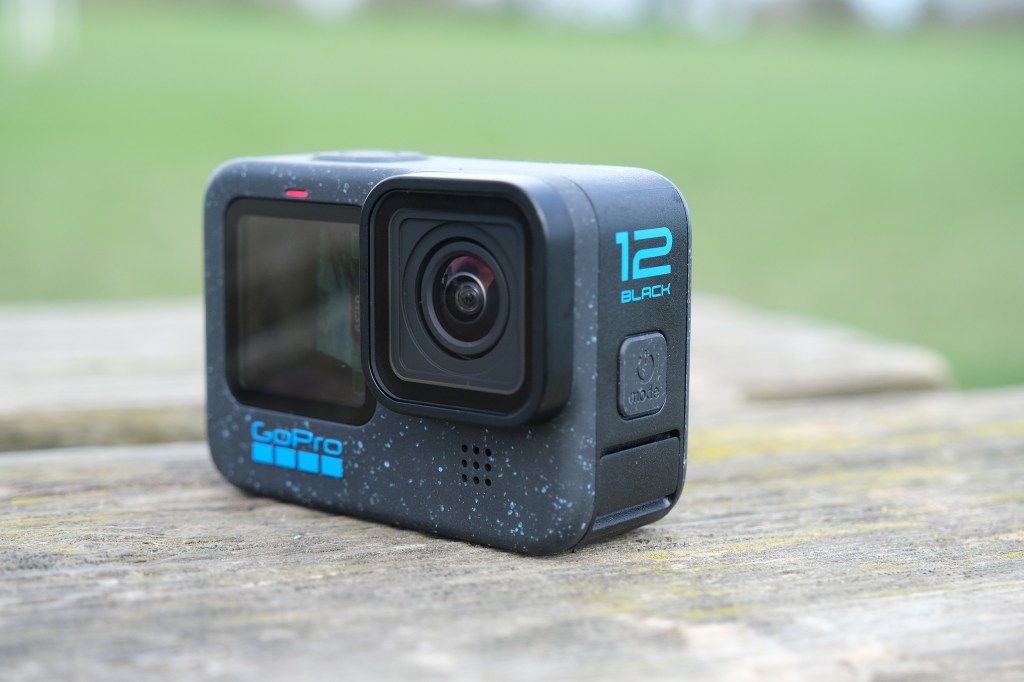
Features
Along with price and design, the GoPro HERO12 Black retains some of the features of its predecessor the HERO11 Black, has the same GoPro Enduro (1720mAh) battery as the 11 Black, front and back screens, and the same form (71.8 x 50.8 x 33.6 mm), processor, and weight (154g).
The HERO12 offers two interfaces – Easy and Pro. In Easy mode, the camera adjusts settings for you, which is great for starting out and getting to know the camera – or even if just using it casually, it provides great footage. The Pro mode unlocks all the features available and allows more user control – but with that comes more to learn and get your head around. I chose Easy Mode while getting to know the camera; after a while, it made sense to change to Pro to get more out of it with fewer restrictions.
Like the HERO11 Black, the HERO12 Black features the same 1/1.7-inch 27MP 8:7 sensor that can capture 16:9, 9:16, 4:3 and 8:7 footage. It can shoot at up to 5.3K 60fps and 4K 120fps, in 2.7K it can capture 240fps. Plus, up to 8x Slo-mo, 4x 120fps at 4K, 8x 240fps at 2.7k. As well as 27MP photos, 24.7MP stills can be captured from video.
The GoPro HERO12 Black has a big range of shooting options and features:
Timelapse:
- TimeWarp
- Star trails
- Light painting
- Vehicle light trail
The above modes are all available in 8:7 ratio, previously just standard video.
- Hindsight: Captures 30 secs of footage before recording – if pressing shutter too late you will still get the shot.
- Scheduled capture: Auto capture shot up to 24 hours in advance
- Duration capture: 15 secs – 3 hours long.
Angles:
- HyperView
- SuperView
- Wide
- Linear
- Linear+Horizon Lock
New to this model came vertical 9:16 recording in 1080, 4K and 5.3K resolutions, a 1/4-inch thread mount between its flip-out feet, Timecode Sync, upgraded HyperSmooth 6.0 video, HDR video mode, and improvements in audio – with support for wireless audio from Bluetooth microphones, wireless earbuds like Airpods. Plus, up to 2x battery life thanks to some software improvements.
A feature carried over from the 11 Black is the file transfer to phone using a USB-C cable, supported by phones with a USB-C port. But one feature that was missing from the HERO12 spec sheets was built in GPS – a standard element in the HERO11. The GoPro Quik App allows further control of the camera even if it’s set up further away as well as editing.
Build and handling
Weighing 154g with the battery, the HERO12 Black camera body is the same as previous releases (71.8 x 50.8 x 33.6mm). The camera is ultra-rugged and built to be used in any situation. It feels robust and like it could take a beating, which is ultimately what you need from an action camera.
Opening the latch where the battery, charging port, MicroSD card slot is located, was quite fiddly and needed some prying, but essentially gave me the confidence that it is reliable and nothing was getting in or out of there easily.
The front of the camera features the lens and a front screen (1.4″ Color Display) as well as a LED light on the front sharing current recording status and microphone. The front screen is great for selfies and vlogging but can also be turned off – which is handy if you are recording in public and want to be discreet.
The rear screen is a 2.27″ Touch Display. A shutter button remains at the top, with power button at the side. The screens are well lit and very responsive, making them easy to use. When the camera is switched off the power button also has the ability to activate quick-fire recording.
The addition of the 1/4inch thread mount in the centre of the Folding Fingers for accessories is great for use on tripods; making it a very flexible camera for different situations and needs. The Folding Fingers still allow for use with other accessories using typical screws. I used a few accessories by different brands, and this worked well, so the camera is very adaptable to existing kit you may have. (If only it had a magnetic mounting option as well, it would match up to the likes of the Insta360 GO 3 I have reviewed for mounting and shooting flexibility.)
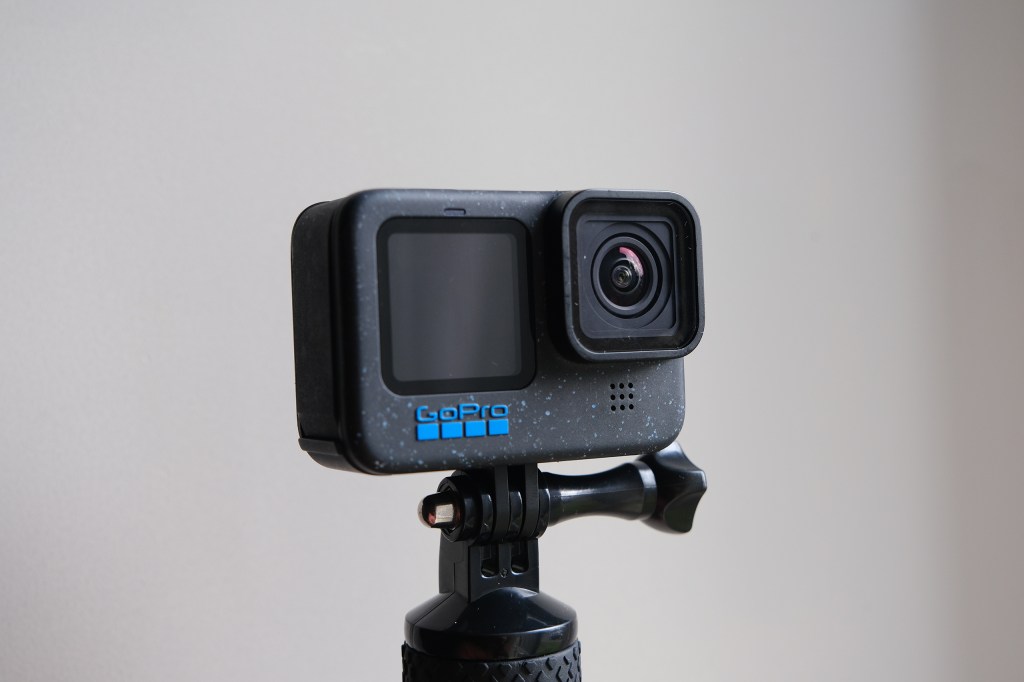
The HERO12 is waterproof up to 33ft (10m), and the hydrophobic lens sheds water to keep shots crystal clear. With the Protective Housing, which is sold separately ($40 / £55), waterproofing increases to up to 196ft (60m).
The camera body provides a single USB-C port allowing for charging and transfers. Connectivity is also available from 4.2 Bluetooth and 5GHz WiFi. It does also contain one MicroSD card slot for storage.
The f/2.5 aperture lens that delivers a 151-degree field of view can be increased to 177 degrees Max Lens Mod 2.0; which means you will get wider and taller shots.
Performance and image quality
There is no progression in image quality from the GoPro HERO11 to the 12, with photo resolutions up to 27.13MP (5568×4872) and the same photo modes available. Images can be recorded in JPEG as well as RAW, and there is also a PRO manual mode for adjusting more settings yourself.
Video footage can be captured up to 5.3K 60fps, 4K at up to 120fps, and 2.7K footage at up to 240fps. Both video and images can be created in 9:16 vertical format without needing to rotate the camera; as has now become standard to most new action cameras for short-form content creators. The HDR video mode can now shoot up to 5.3k30 and allows for greater detail and colour.
The 8:7 aspect-ratio sensor captures footage that is ready for editing. If using the 5.3K resolution, clips can be cropped easily within the GoPro Quik app to 1:1, 16:9, or 9:16 while retaining a high resolution – as well as adjusting Horizon levels and changing lens type: Linear, Wide, SuperView and HyperView.
Likewise, images can be edited within the app, and cropped to 1:1, 16:9 and 4:3 ratios in both portrait and landscape orientations. Having cropped some of the images I took on the camera within the app, I think some quality is actually lost when changing between different ratios.
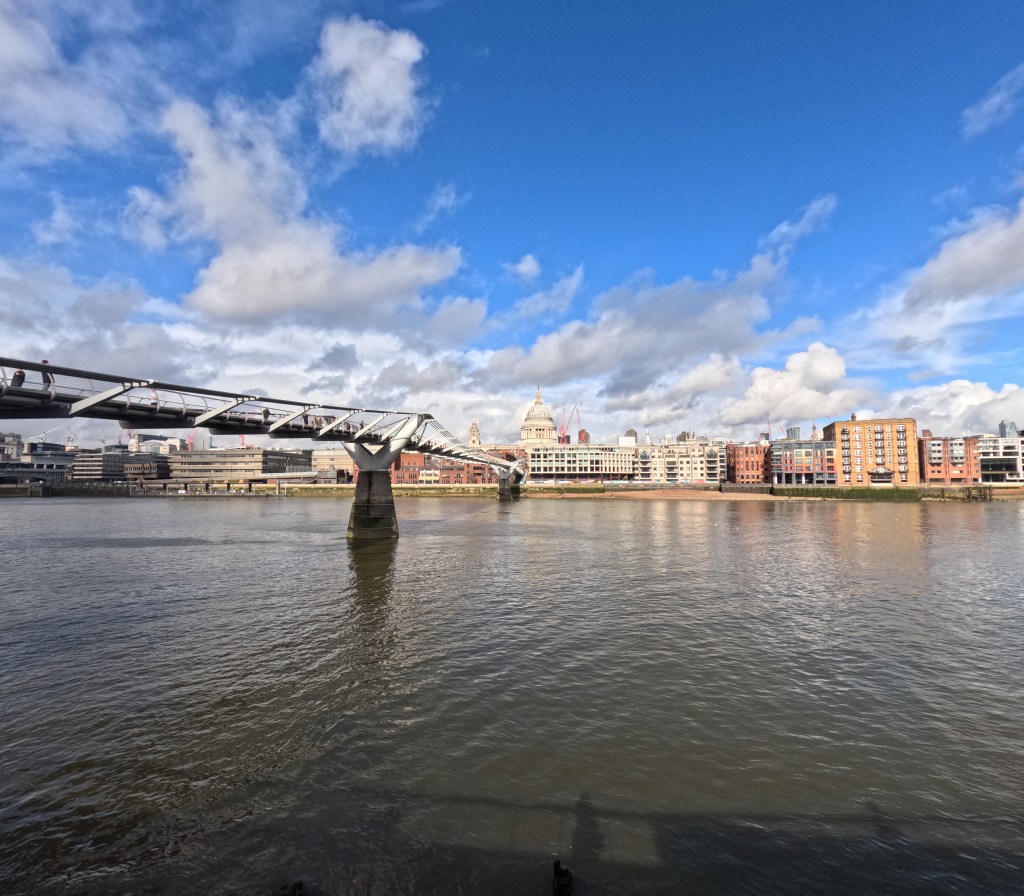
Images are generally very good, with the details and colours in bright sunny scenes looking crisp. The real downside is the low light performance. In Night photo mode I found the screen to be very laggy. While the time-lapse and light painting type features are exciting and fun, generally image and video quality in low light could do with some improvements. The HERO12 Black did not fare so well in a dark, artificially lit room at events like the AP Awards. Visuals are very grainy and generally low quality; you would be better off using your phone.
The HERO12 Black comes with a 1720mAh Enduro battery, offering longer running times. Approximately 1.5hr at 5.3K 30, 2.5hours at 1080p30. I found the battery life fared rather well, especially when using for sporadic vlogging and longer stints on a bike ride. I did notice the battery drop quickly when changing between lots of different settings for recording segments.
Despite some reports saying there have been improvements in the overheating, I still found the HERO12 Black got warm when used out and about for long spells, and changing through different settings. One’s surroundings of course will also influence this – as it happens, I was using the camera on a nice sunny Spring day in the UK.
I tried out the GoPro voice control to start and stop recording video. I found myself shouting at the device as it took quite a few attempts to start recording. This feature seems to work best when speaking directly to the microphone at the front or speaking towards the top of the camera – rather than behind. When telling the GoPro to stop recording, it’s worth mentioning that this piece of audio is kept in the video – so will need cutting out before you use it!
When testing the camera on a bike ride, I found the wind sound was particularly prominent, but stabilisation was superb and all footage remained smooth. The Linear+Horizon Lock mode in particular was great for keeping shots straight. Speaking and general audio in videos overall is very good despite the wind noise, though if you are by a busy road for example, this remained quite loud.
Verdict
The GoPro HERO12 Black creates some well-lit, great looking footage – if not shooting in low light. There are plenty of features to get your teeth into and the stabilisation is second to none – making it a great action camera and suitable for all kinds of users. It’s also ideal for vloggers and social media creators who want to cut 16:9 and 9:16 content from the same footage.
The HERO12 is a great little camera but, overall, nothing here is exactly groundbreaking. It’s very similar to the HERO11 Black – if you already have this, then you’re not missing out on much. This is reflected in their prices, which are now about the same. Those that need the newer pro features in filmmaking– Timecode Sync and Log colour profile, should opt for the HERO12.

